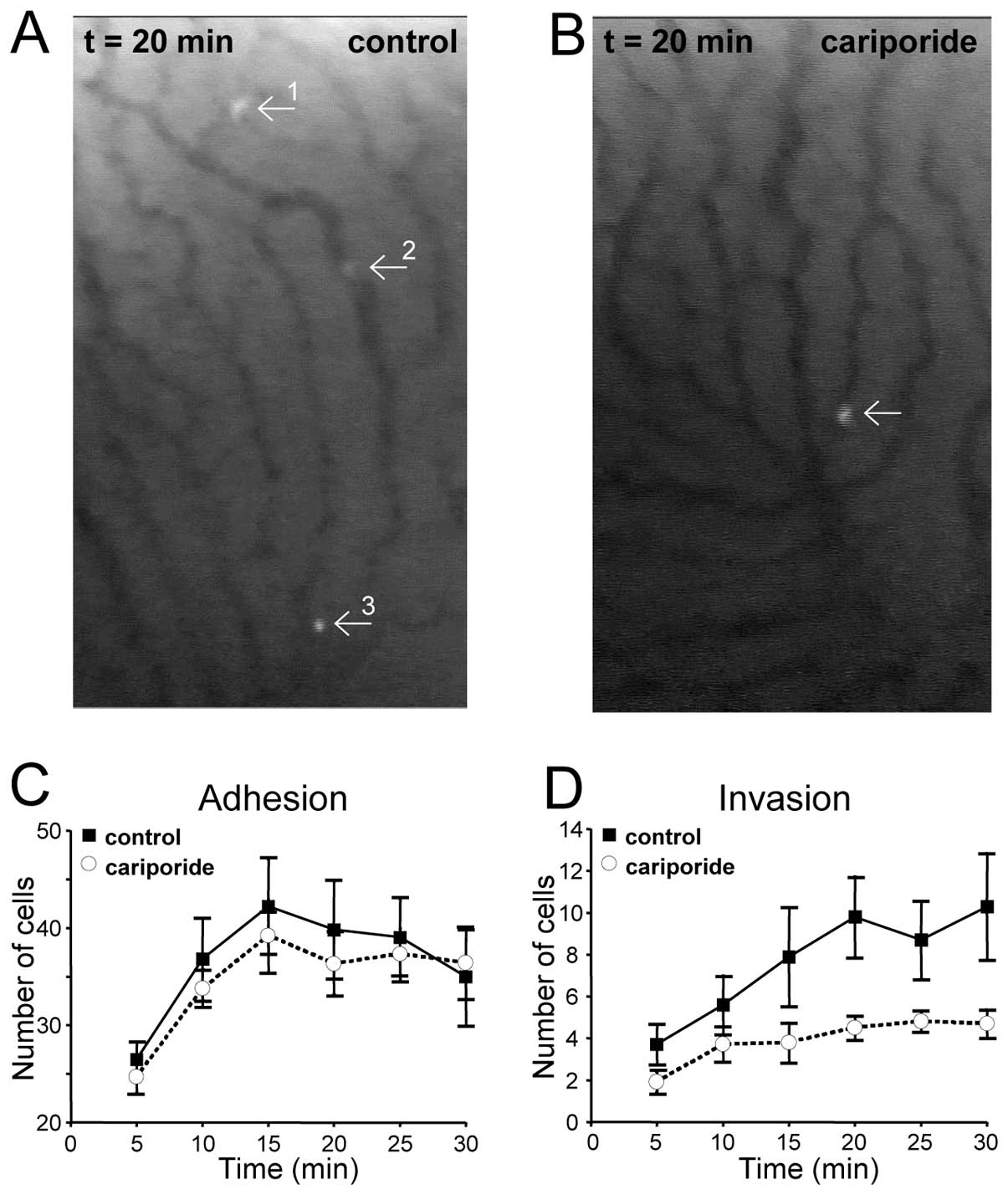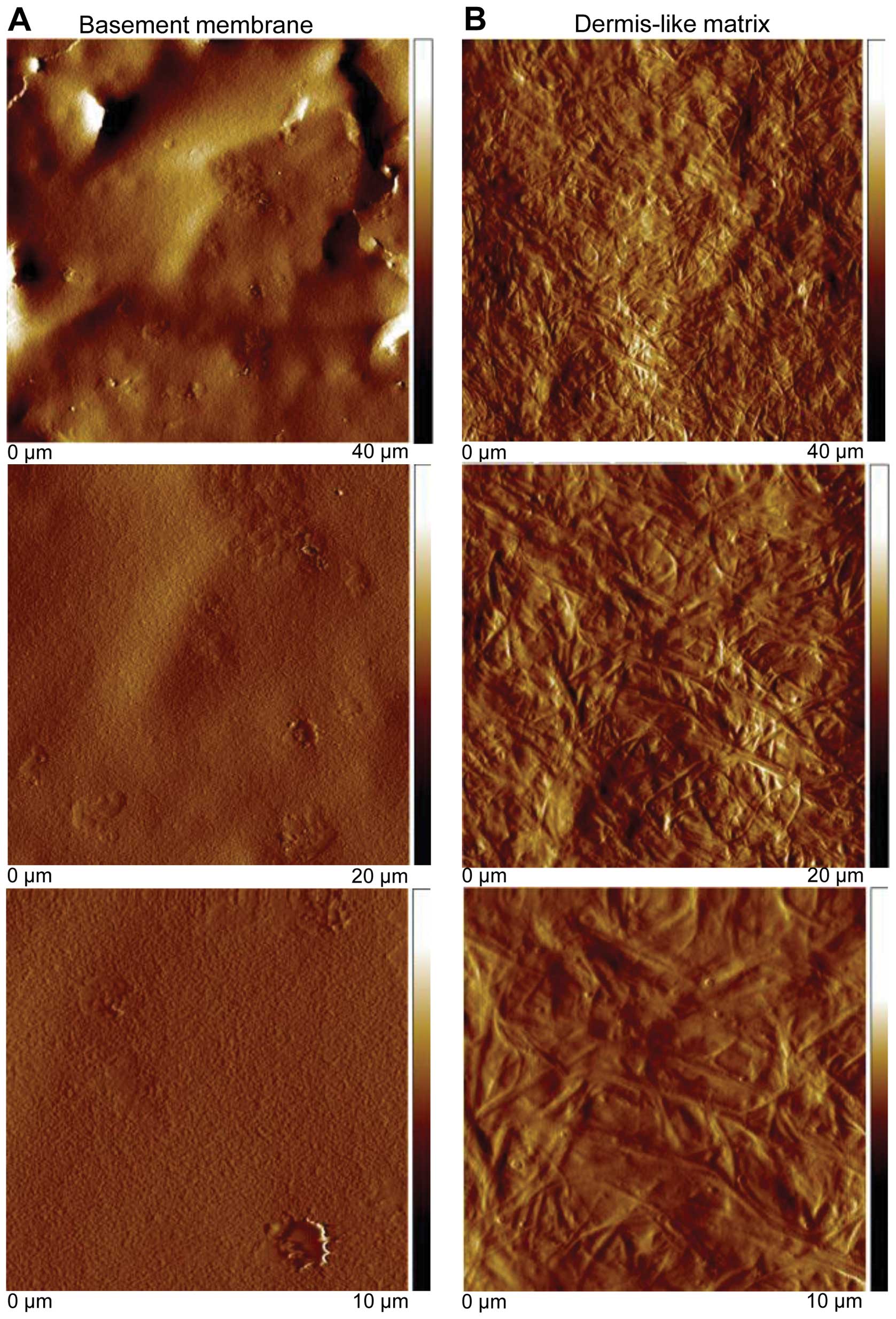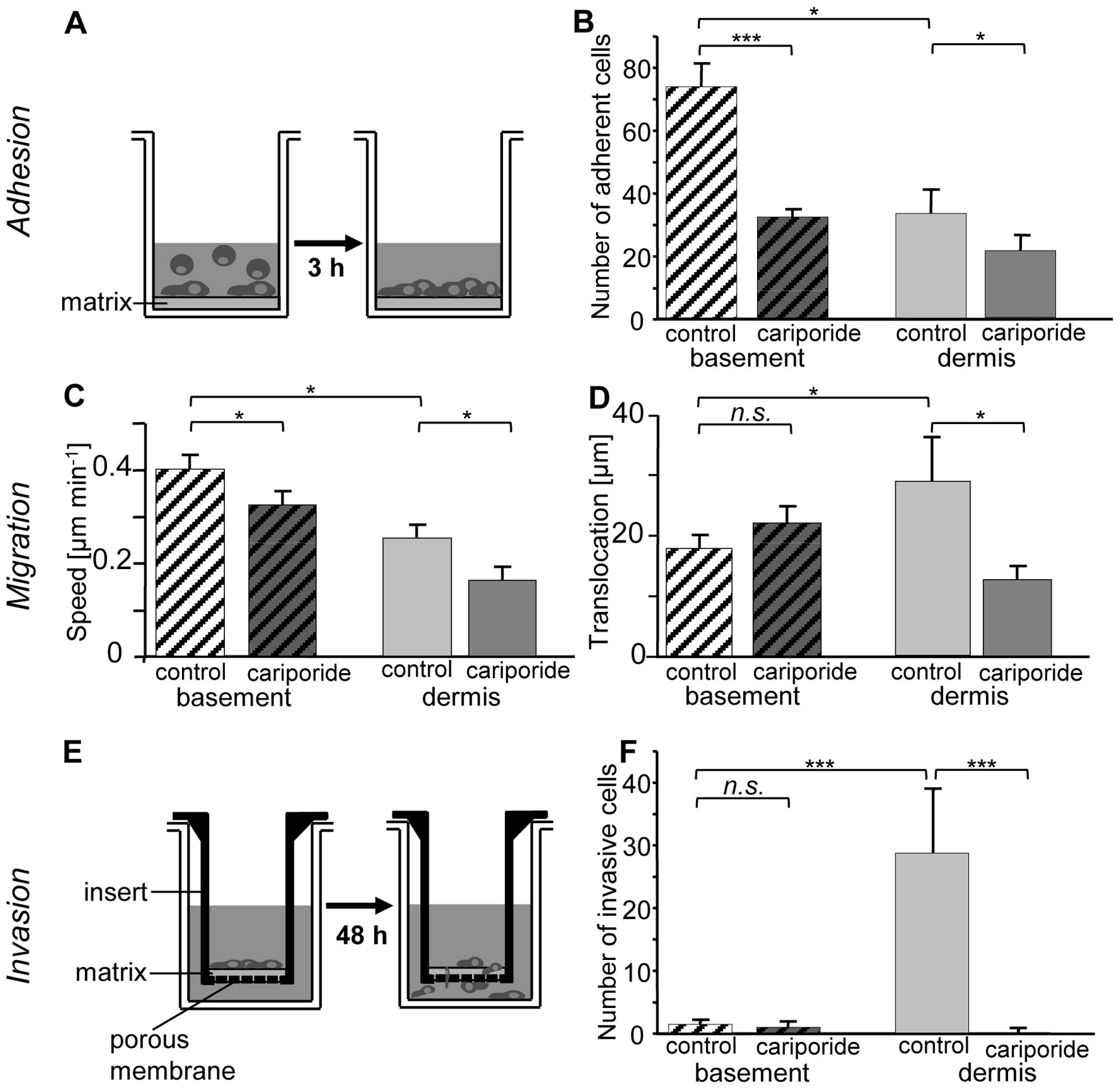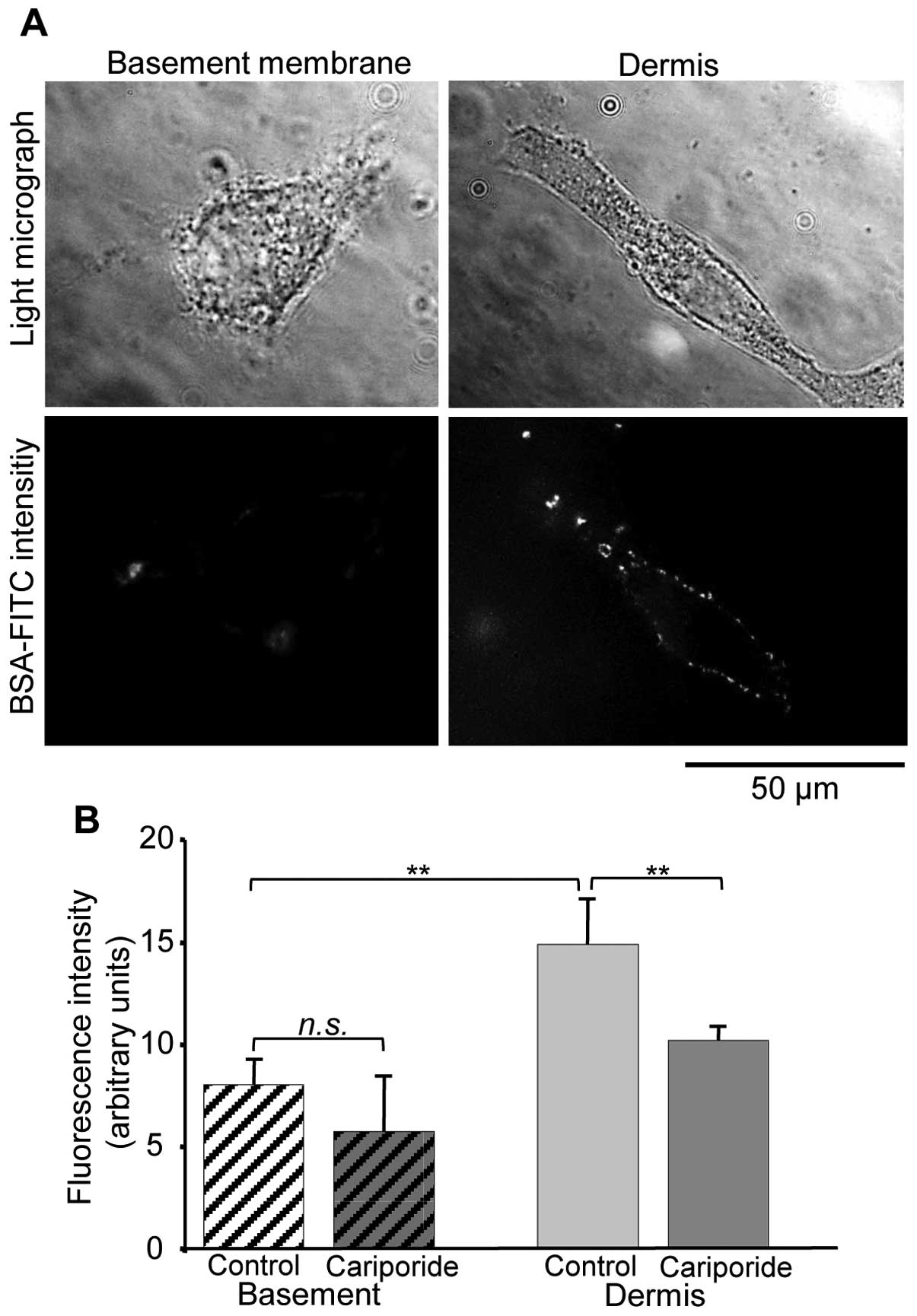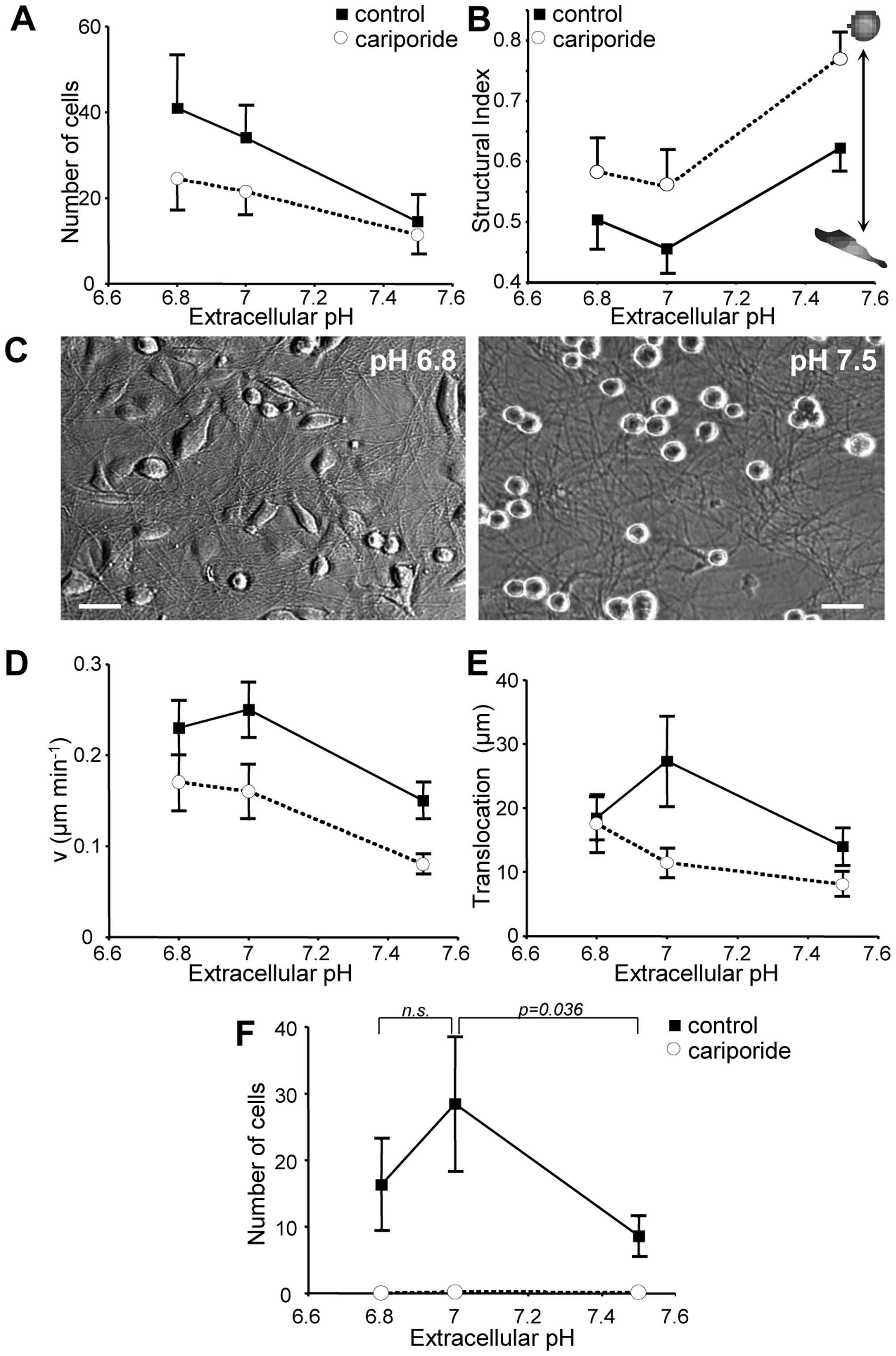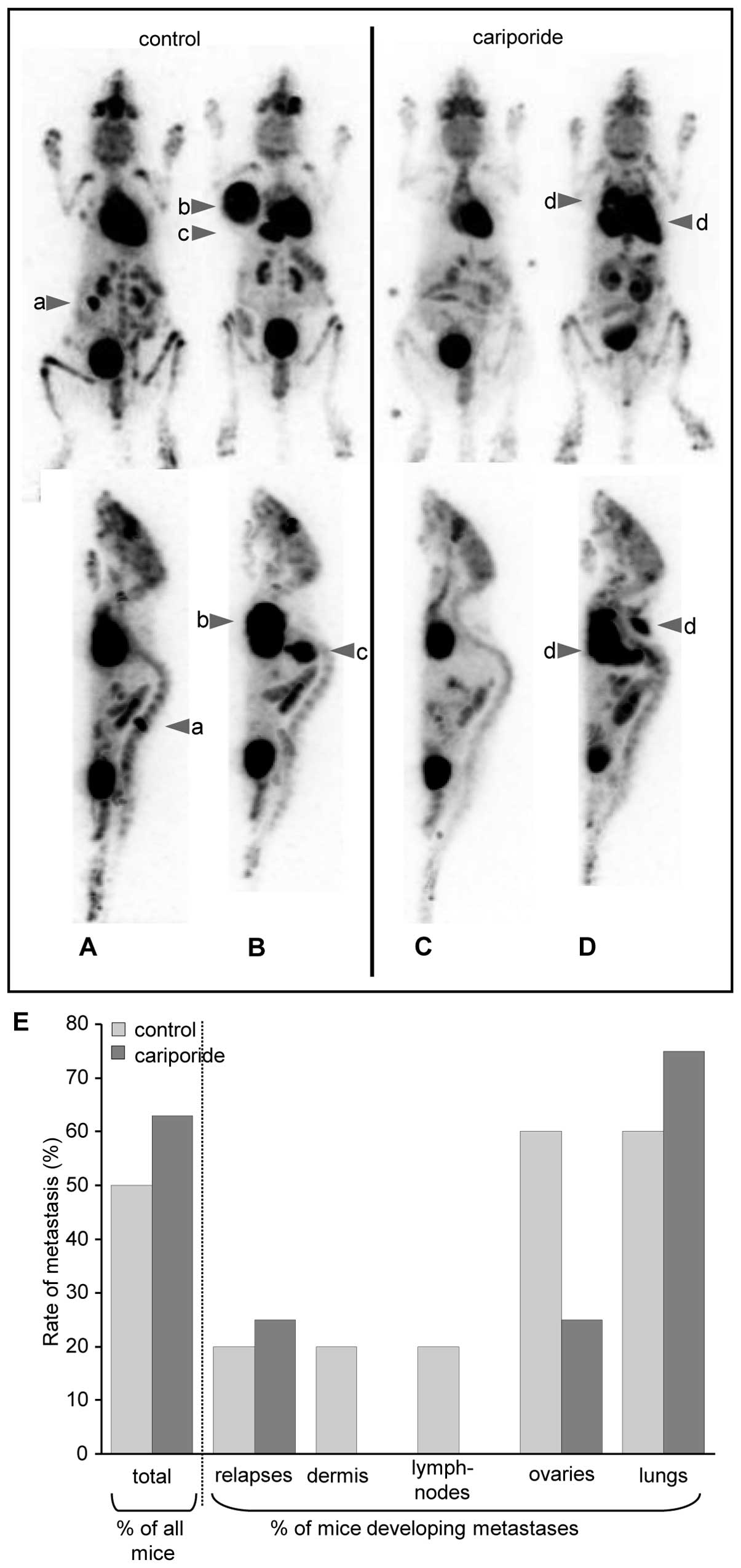|
1.
|
Lock JG, Wehrle-Haller B and Stromblad S:
Cell-matrix adhesion complexes: master control machinery of cell
migration. Semin Cancer Biol. 18:65–76. 2008. View Article : Google Scholar : PubMed/NCBI
|
|
2.
|
Broussard JA, Webb DJ and Kaverina I:
Asymmetric focal adhesion disassembly in motile cells. Curr Opin
Cell Biol. 20:85–90. 2008. View Article : Google Scholar : PubMed/NCBI
|
|
3.
|
Arnaout MA, Goodman SL and Xiong JP:
Structure and mechanics of integrin-based cell adhesion. Curr Opin
Cell Biol. 19:495–507. 2007. View Article : Google Scholar : PubMed/NCBI
|
|
4.
|
Niggli V and Rossy J:
Ezrin/radixin/moesin: versatile controllers of signaling molecules
and of the cortical cytoskeleton. Int J Biochem Cell Biol.
40:344–349. 2008. View Article : Google Scholar : PubMed/NCBI
|
|
5.
|
Grinstein S, Woodside M, Waddell TK, et
al: Focal localization of the NHE-1 isoform of the
Na+/H+ antiport: assessment of effects on
intracellular pH. EMBO J. 12:5209–5218. 1993.PubMed/NCBI
|
|
6.
|
Plopper GE, McNamee HP, Dike LE,
Bojanowski K and Ingber DE: Convergence of integrin and growth
factor receptor signaling pathways within the focal adhesion
complex. Mol Biol Cell. 6:1349–1365. 1995. View Article : Google Scholar : PubMed/NCBI
|
|
7.
|
Stock C and Schwab A: Role of the Na/H
exchanger NHE1 in cell migration. Acta Physiol (Oxf). 187:149–157.
2006. View Article : Google Scholar : PubMed/NCBI
|
|
8.
|
Stock C, Mueller M, Kraehling H, et al: pH
nanoenvironment at the surface of single melanoma cells. Cell
Physiol Biochem. 20:679–686. 2007. View Article : Google Scholar : PubMed/NCBI
|
|
9.
|
Harguindey S, Orive G, Luis Pedraz J,
Paradiso A and Reshkin SJ: The role of pH dynamics and the
Na+/H+ antiporter in the etiopathogenesis and
treatment of cancer. Two faces of the same coin - one single
nature. Biochim Biophys Acta. 1756:1–24. 2005.PubMed/NCBI
|
|
10.
|
Stock C, Ludwig FT and Schwab A: Is the
multifunctional Na+/H+ exchanger isoform 1 a
potential therapeutic target in cancer? Curr Med Chem. 19:647–660.
2012.PubMed/NCBI
|
|
11.
|
Warburg O: On the origin of cancer cells.
Science. 123:309–314. 1956. View Article : Google Scholar : PubMed/NCBI
|
|
12.
|
Helmlinger G, Sckell A, Dellian M, Forbes
NS and Jain RK: Acid production in glycolysis-impaired tumors
provides new insights into tumor metabolism. Clin Cancer Res.
8:1284–1291. 2002.PubMed/NCBI
|
|
13.
|
Meima ME, Mackley JR and Barber DL: Beyond
ion translocation: structural functions of the sodium-hydrogen
exchanger isoform-1. Curr Opin Nephrol Hypertens. 16:365–372. 2007.
View Article : Google Scholar : PubMed/NCBI
|
|
14.
|
Klein M, Seeger P, Schuricht B, Alper SL
and Schwab A: Polarization of Na+/H+ and
Cl−/HCO3− exchangers in migrating
renal epithelial cells. J Gen Physiol. 115:599–608. 2000.
|
|
15.
|
Stuwe L, Muller M, Fabian A, et al: pH
dependence of melanoma cell migration: protons extruded by NHE1
dominate protons of the bulk solution. J Physiol. 585:351–360.
2007. View Article : Google Scholar : PubMed/NCBI
|
|
16.
|
Cardone RA, Bellizzi A, Busco G, et al:
The NHERF1 PDZ2 domain regulates PKA-RhoA-p38-mediated NHE1
activation and invasion in breast tumor cells. Mol Biol Cell.
18:1768–1780. 2007. View Article : Google Scholar : PubMed/NCBI
|
|
17.
|
Bourguignon LY, Singleton PA, Diedrich F,
Stern R and Gilad E: CD44 interaction with
Na+-H+ exchanger (NHE1) creates acidic
microenvironments leading to hyaluronidase-2 and cathepsin B
activation and breast tumor cell invasion. J Biol Chem.
279:26991–27007. 2004.PubMed/NCBI
|
|
18.
|
Hu G, Kang Y and Wang XF: From breast to
the brain: unraveling the puzzle of metastasis organotropism. J Mol
Cell Biol. 1:3–5. 2009. View Article : Google Scholar : PubMed/NCBI
|
|
19.
|
Meyers ML and Balch CM: Diagnosis and
treatment of metastatic melanoma. Cutaneous Melanoma. Balch CM,
Houghton AN, Sober AJ and Soong S-J: Quality Medical Publishing,
Inc; St Louis, MO: 1998
|
|
20.
|
Paget S: The distribution of secondary
growths in cancer of the breast. 1889. Cancer Metastasis Rev.
8:98–101. 1989.PubMed/NCBI
|
|
21.
|
Peyton SR and Putnam AJ: Extracellular
matrix rigidity governs smooth muscle cell motility in a biphasic
fashion. J Cell Physiol. 204:198–209. 2005. View Article : Google Scholar : PubMed/NCBI
|
|
22.
|
Stock C, Cardone RA, Busco G, Krahling H,
Schwab A and Reshkin SJ: Protons extruded by NHE1: digestive or
glue? Eur J Cell Biol. 87:591–599. 2008. View Article : Google Scholar : PubMed/NCBI
|
|
23.
|
Krahling H, Mally S, Eble JA, Noel J,
Schwab A and Stock C: The glycocalyx maintains a cell surface pH
nanoenvironment crucial for integrin-mediated migration of human
melanoma cells. Pflugers Arch. 458:1069–1083. 2009. View Article : Google Scholar : PubMed/NCBI
|
|
24.
|
Ludwig FT, Schwab A and Stock C: The
Na+/H+ - exchanger (NHE1) generates pH
nanodomains at focal adhesions. J Cell Physiol. 228:1351–1358.
2013.PubMed/NCBI
|
|
25.
|
Supino R, Prosperi E, Formelli F, Mariani
M and Parmiani G: Characterization of a doxorubicin-resistant
murine melanoma line: studies on cross-resistance and its
circumvention. Br J Cancer. 54:33–42. 1986. View Article : Google Scholar : PubMed/NCBI
|
|
26.
|
Fafournoux P, Noel J and Pouyssegur J:
Evidence that Na+/H+ exchanger isoforms NHE1
and NHE3 exist as stable dimers in membranes with a high degree of
specificity for homodimers. J Biol Chem. 269:2589–2596.
1994.PubMed/NCBI
|
|
27.
|
Haier J, Korb T, Hotz B, Spiegel HU and
Senninger N: An intravital model to monitor steps of metastatic
tumor cell adhesion within the hepatic microcirculation. J
Gastrointest Surg. 7:507–515. 2003. View Article : Google Scholar : PubMed/NCBI
|
|
28.
|
Korb T, Schluter K, Enns A, et al:
Integrity of actin fibers and microtubules influences metastatic
tumor cell adhesion. Exp Cell Res. 299:236–247. 2004. View Article : Google Scholar : PubMed/NCBI
|
|
29.
|
Busco G, Cardone RA, Greco MR, et al: NHE1
promotes invadopodial ECM proteolysis through acidification of the
peri-invadopodial space. FASEB J. 24:3903–3915
|
|
30.
|
Schafers KP, Reader AJ, Kriens M, Knoess
C, Schober O and Schafers M: Performance evaluation of the
32-module quadHIDAC small-animal PET scanner. J Nucl Med.
46:996–1004. 2005.PubMed/NCBI
|
|
31.
|
Stock C, Gassner B, Hauck CR, et al:
Migration of human melanoma cells depends on extracellular pH and
Na+/H+ exchange. J Physiol. 567:225–238.
2005. View Article : Google Scholar : PubMed/NCBI
|
|
32.
|
Couvelard A, Scoazec JY, Dauge MC,
Bringuier AF, Potet F and Feldmann G: Structural and functional
differentiation of sinusoidal endothelial cells during liver
organogenesis in humans. Blood. 87:4568–4580. 1996.PubMed/NCBI
|
|
33.
|
Poincloux R, Lizarraga F and Chavrier P:
Matrix invasion by tumour cells: a focus on MT1-MMP trafficking to
invadopodia. J Cell Sci. 122:3015–3024. 2009. View Article : Google Scholar : PubMed/NCBI
|
|
34.
|
Roy R, Yang J and Moses MA: Matrix
metalloproteinases as novel biomarkers and potential therapeutic
targets in human cancer. J Clin Oncol. 27:5287–5297. 2009.
View Article : Google Scholar : PubMed/NCBI
|
|
35.
|
Bedossa P and Paradis V: Liver
extracellular matrix in health and disease. J Pathol. 200:504–515.
2003. View Article : Google Scholar : PubMed/NCBI
|
|
36.
|
Martinez-Hernandez A: The hepatic
extracellular matrix. I Electron immunohistochemical studies in
normal rat liver. Lab Invest. 51:57–74. 1984.PubMed/NCBI
|
|
37.
|
Rosenow F, Ossig R, Thormeyer D, et al:
Integrins as antimetastatic targets of RGD-independent snake venom
components in liver metastasis [corrected]. Neoplasia. 10:168–176.
2008.PubMed/NCBI
|
|
38.
|
Schuppan D: Structure of the extracellular
matrix in normal and fibrotic liver: collagens and glycoproteins.
Semin Liver Dis. 10:1–10. 1990. View Article : Google Scholar : PubMed/NCBI
|
|
39.
|
Gressner AM: Hepatic proteoglycans - a
brief survey of their pathobiochemical implications.
Hepatogastroenterology. 30:225–229. 1983.PubMed/NCBI
|
|
40.
|
Kramer RH and Vogel KG: Selective
degradation of basement membrane macromolecules by metastatic
melanoma cells. J Natl Cancer Inst. 72:889–899. 1984.PubMed/NCBI
|
|
41.
|
Luikart SD, Maniglia CA and Sartorelli AC:
Influence of collagen substrata on glycosaminoglycan production by
B16 melanoma cells. Proc Natl Acad Sci USA. 80:3738–3742. 1983.
View Article : Google Scholar : PubMed/NCBI
|
|
42.
|
Culp LA, Rollins BJ, Buniel J and Hitri S:
Two functionally distinct pools of glycosaminoglycan in the
substrate adhesion site of murine cells. J Cell Biol. 79:788–801.
1978. View Article : Google Scholar : PubMed/NCBI
|
|
43.
|
Yamada KM, Kennedy DW, Kimata K and Pratt
RM: Characterization of fibronectin interactions with
glycosaminoglycans and identification of active proteolytic
fragments. J Biol Chem. 255:6055–6063. 1980.PubMed/NCBI
|
|
44.
|
Sakashita S, Engvall E and Ruoslahti E:
Basement membrane glycoprotein laminin binds to heparin. FEBS Lett.
116:243–246. 1980. View Article : Google Scholar : PubMed/NCBI
|
|
45.
|
Ramos DM, Berston ED and Kramer RH:
Analysis of integrin receptors for laminin and type IV collagen on
metastatic B16 melanoma cells. Cancer Res. 50:728–734.
1990.PubMed/NCBI
|
|
46.
|
Tietze L, Borntraeger J, Klosterhalfen B,
et al: Expression and function of beta(1) and beta(3) integrins of
human mesothelial cells in vitro. Exp Mol Pathol. 66:131–139. 1999.
View Article : Google Scholar : PubMed/NCBI
|
|
47.
|
Lonsdorf AS, Kramer BF, Fahrleitner M, et
al: Engagement of αIIbβ3 (GPIIb/IIIa) with ανβ3 integrin mediates
interaction of melanoma cells with platelets: a connection to
hematogenous metastasis. J Biol Chem. 287:2168–2178. 2012.
|
|
48.
|
Li X, Regezi J, Ross FP, et al: Integrin
alphavbeta3 mediates K1735 murine melanoma cell motility in vivo
and in vitro. J Cell Sci. 114:2665–2672. 2001.PubMed/NCBI
|
|
49.
|
Friedl P, Maaser K, Klein CE, Niggemann B,
Krohne G and Zanker KS: Migration of highly aggressive MV3 melanoma
cells in 3-dimensional collagen lattices results in local matrix
reorganization and shedding of alpha2 and beta1 integrins and CD44.
Cancer Res. 57:2061–2070. 1997.PubMed/NCBI
|
|
50.
|
Paradise RK, Lauffenburger DA and Van
Vliet KJ: Acidic extracellular pH promotes activation of integrin
alpha(v) beta(3). PLoS One. 6:e157462011. View Article : Google Scholar : PubMed/NCBI
|
|
51.
|
Cardone RA, Casavola V and Reshkin SJ: The
role of disturbed pH dynamics and the Na+/H+
exchanger in metastasis. Nat Rev Cancer. 5:786–795. 2005.
View Article : Google Scholar : PubMed/NCBI
|
|
52.
|
Koblinski JE, Ahram M and Sloane BF:
Unraveling the role of proteases in cancer. Clin Chim Acta.
291:113–135. 2000. View Article : Google Scholar : PubMed/NCBI
|
|
53.
|
Tedone T, Correale M, Barbarossa G,
Casavola V, Paradiso A and Reshkin SJ: Release of the aspartyl
protease cathepsin D is associated with and facilitates human
breast cancer cell invasion. FASEB J. 11:785–792. 1997.PubMed/NCBI
|
|
54.
|
Szpaderska AM and Frankfater A: An
intracellular form of cathepsin B contributes to invasiveness in
cancer. Cancer Res. 61:3493–3500. 2001.PubMed/NCBI
|
|
55.
|
Mohamed MM and Sloane BF: Cysteine
cathepsins: multifunctional enzymes in cancer. Nat Rev Cancer.
6:764–775. 2006. View Article : Google Scholar : PubMed/NCBI
|
|
56.
|
Kindzelskii AL, Amhad I, Keller D, et al:
Pericellular proteolysis by leukocytes and tumor cells on
substrates: focal activation and the role of urokinase-type
plasminogen activator. Histochem Cell Biol. 121:299–310. 2004.
View Article : Google Scholar : PubMed/NCBI
|
|
57.
|
Pauli BU and Knudson W: Tumor invasion: a
consequence of destructive and compositional matrix alterations.
Hum Pathol. 19:628–639. 1988. View Article : Google Scholar : PubMed/NCBI
|
|
58.
|
Taubenberger AV, Woodruff MA, Bai H,
Muller DJ and Hutmacher DW: The effect of unlocking RGD-motifs in
collagen I on pre-osteoblast adhesion and differentiation.
Biomaterials. 31:2827–2835. 2010. View Article : Google Scholar : PubMed/NCBI
|
|
59.
|
Brooks PC, Stromblad S, Sanders LC, et al:
Localization of matrix metalloproteinase MMP-2 to the surface of
invasive cells by interaction with integrin alpha v beta 3. Cell.
85:683–693. 1996. View Article : Google Scholar : PubMed/NCBI
|
|
60.
|
Shapiro SD: Chairman’s summary.
Proceedings of the American Thoracic Society. 42006.
|
|
61.
|
Thompson SM, Jesudason EC, Turnbull JE and
Fernig DG: Heparan sulfate in lung morphogenesis: The elephant in
the room. Birth Defects Res C Embryo Today. 90:32–44. 2010.
View Article : Google Scholar : PubMed/NCBI
|
|
62.
|
Dunsmore SE and Rannels DE: Extracellular
matrix biology in the lung. Am J Physiol. 270:L3–L27.
1996.PubMed/NCBI
|
|
63.
|
Harms JF, Welch DR, Samant RS, et al: A
small molecule antagonist of the alpha(v)beta3 integrin suppresses
MDA-MB-435 skeletal metastasis. Clin Exp Metastasis. 21:119–128.
2004. View Article : Google Scholar : PubMed/NCBI
|
|
64.
|
Sloan EK, Pouliot N, Stanley KL, et al:
Tumor-specific expression of alphavbeta3 integrin promotes
spontaneous metastasis of breast cancer to bone. Breast Cancer Res.
8:R202006. View Article : Google Scholar : PubMed/NCBI
|
|
65.
|
Bentmann A, Kawelke N, Moss D, et al:
Circulating fibronectin affects bone matrix, whereas osteoblast
fibronectin modulates osteoblast function. J Bone Miner Res.
25:706–715. 2010.PubMed/NCBI
|
|
66.
|
Montgomery AM, Reisfeld RA and Cheresh DA:
Integrin alpha v beta 3 rescues melanoma cells from apoptosis in
three-dimensional dermal collagen. Proc Natl Acad Sci USA.
91:8856–8860. 1994. View Article : Google Scholar : PubMed/NCBI
|
|
67.
|
Effros RM and Chinard FP: The in vivo pH
of the extravascular space of the lung. J Clin Invest.
48:1983–1996. 1969. View Article : Google Scholar : PubMed/NCBI
|
















